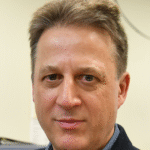 Prof. Nikolai Petrovsky Prof. Nikolai Petrovsky
Professor of Immunology and Infectious Disease
Australian Respiratory and Sleep Medicine Institute
Australia |
Title:
Where to from here for vaccine adjuvants?
Abstract:
Until recently, development of new adjuvants was held back by poor understanding of their mechanisms of action. Recent advances have led to many new human adjuvants. Vaxine has used AI to discover many new adjuvants that target immune receptors such as DC-SIGN, NOD2 and TLR-2, 4, 7, 8 or 9. These compounds can be used singly or in combination to induce many different types of immune response to co-administered protein, peptide, or polysaccharide antigens. Such vaccines can be delivered using varied delivery systems such as jet injectors, microneedle transdermal patches, and aeosol lung delivery to ensure a protective vaccine response. Benefits can be demonstrated in models of infectious disease (e.g. influenza, SARS-CoV-2, tuberculosis), allergy, cancer, neurodegenerative dieases and even opioid addiction. The robust protection when formulated with appropriate antigens can be traced to the ability to broadly enhance different arms of the adaptive immune response, resulting in generation of high avidity antibody and memory B cells plus memory and effector CD4 and CD8 T cells.
Biography:
Professor Nikolai Petrovsky is a physician scientist with a passion for vaccine and artificial intelligence research. He is Professor of Immunology and Infectious Disease at the Australian Respiratory and Sleep Medicine Institute in Adelaide and Research Director at Vaxine Pty Ltd, a leading Australian biotechnology company. He is best known for his development of SpikoGen®/Covax-19, the first licensed protein-based COVID-19 vaccine. With 8 million doses delivered in the Middle East, SpikoGen® is estimated to have saved tens of thousands of lives from COVID-19. He is also the creator of many adjuvants including Advax and CpG55.2, the first licensed human product to be created by artificial intelligence. He has authored over 300 peer-reviewed research papers and reviews and his research has attracted over 50 million in funding from the US National Institutes of Health.
|
 Prof. Nikolai Petrovsky
Prof. Nikolai Petrovsky Prof. Nikolai Petrovsky
Prof. Nikolai Petrovsky